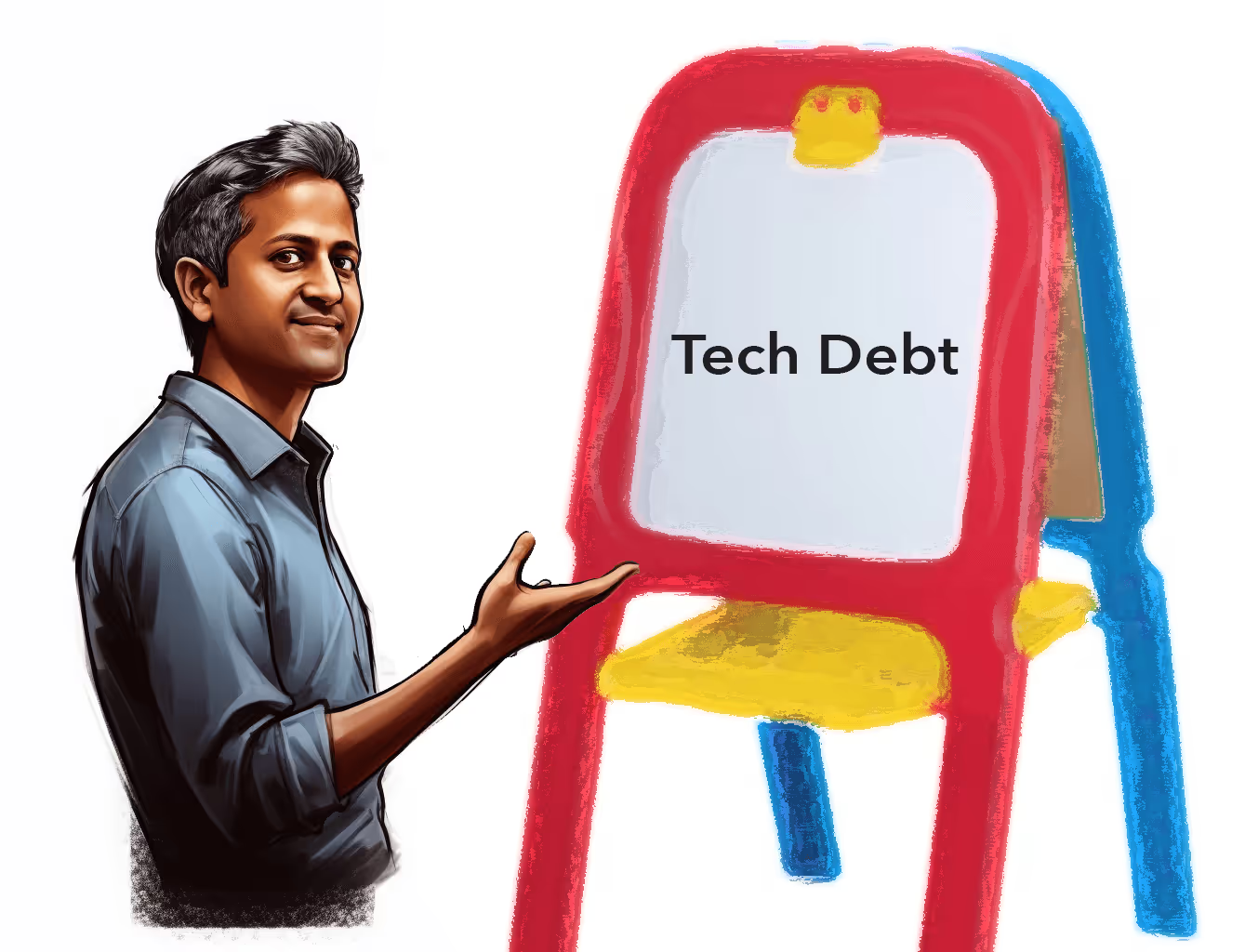November 16, 2023

I take a different view from a lot of developers and a lot of CTOs on these topics, so this one may surprise you. Tech debt — I love it. So why do I love tech debt? Because that's very counterintuitive.
Well, firstly, what is tech debt? That's when your code is not flexible enough to support new enhancements; it's kind of gotten old and rickety under the covers. And when does this happen? You can only have tech debt when you've actually got users who care about your software, you've got paying customers, you've made progress, and so tech debt is an acknowledgement that your software has been in use for some time and it's progressed. The client base may have changed or become more sophisticated over time, and so your original product, what you originally built, is no longer sufficient. So in that sense, tech debt is actually a good thing.
Here's the other reason that tech debt's a good thing, and I would encourage you to not be afraid of it and also to defer doing anything about it as long as possible. Here's why: With tech debt, you have to ask yourself, how long does software actually live and how long is it actually useful? The answer, well according to the IRS, is 15 years — that's the depreciation schedule for software. But if we look at it in recent years, actually it's a lot faster than that. A lot of software that was written last year is irrelevant this year because of ChatGPT, OpenAI, and LLMs, for example. Software can age extremely rapidly. You've got new tech frameworks, new capabilities coming to the table every few years, sometimes faster, as we've seen, sometimes maybe a little slower. But at any rate, it's not worth trying to address this proactively, precisely because the capabilities that you'll have in the future to deal with it are better than those you have today, and also because it's quite likely that some of the things you're building today will be obsolete anyway.
So I say, defer working on your tech debt. Wait until you actually have the burning need, and then assess what's the best modern way to address it at that point.
Business Principles
Startup Costs Video Series
Pursuit of Profits